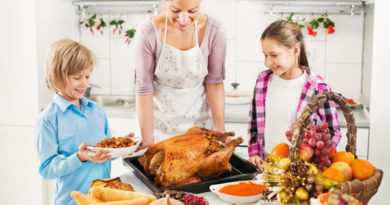Baby’s Development at the age of Nine months
By nine months of age, your baby may have started crawling fluently, as she runs up stairs and down stairs, wide and across. She has even started exploring newer and easier options to move about, that is stand and walk. Now she is often seen moving about while holding onto a sofa or bed or a table, standing upright on her two legs. This may extend up to her taking a couple of steps without any support, but of course depending upon the subjective pace of growth of your child. Meanwhile, she is persistently learning and practicing the art of bending her knees to sit after standing. You can, of course, help your baby learn her lessons more effectively in lesser time. You can stand or kneel in front of her or hold out your hands to encourage her fasten her grip of your hands, as you hold both of her hands and make her walk towards you. You can also buy a toddle truck or similar toy for your baby to facilitate walking practice for her. She can hold onto and push toddle toys (with a stable base) to walk with support.
It is also necessary to childproof your home in all probable ways. Your baby has turned more agile and mobile with age. Putting latches on doors of off-limits cupboards et al will help you keep the stuff inside safer.
As your baby starts standing and moving about on her legs, parents tend to emphasize on need to protect the foot soles of the baby. However, expert opinion reveals that shoes are neither necessary nor advisable for your child until she starts walking outdoors regularly. Going barefoot has dual benefit for the baby. First of all, the baby is better able to balance her feet when bare feet, as her foot soles feel all the textures that she is walking on. Secondly, moving about bare feet strengthens her arches and leg muscles better, than when she is wearing her shoes on.
Her cognitive abilities are developing steadily and rapidly. Now she can put objects in a container and remove them as well. A good exercise for him could be to avail her big enough blocks that she cannot swallow and a plastic bucket. She also enjoys playing with toys that let her move parts within them, like wheels, levers, doors et al. Whats more, she is fond of her toys and objects when one is taken away from her. Now she is more assertive about her likes and dislikes, wants and needs.
You can also try out games involving passing toys between you and your baby. She is most likely to enjoy it a lot. You can roll a ball to her and she just may roll it back to you. Avail her sorting toy or stacking rings, and she may just sort or stack it or hands over the pieces back to you. Her mental and cognitive developments may just awe-inspire you considering that you have been watching her ever since she could barely control her hands or hold a steady gaze.
Nine months old age visits the peak of separation anxiety among babies, as they exhibit acute attachment to you and fear others. You can help her cope with the anxiety by making people to approach her in a gradual manner. The key is let the baby make the first move, rather than otherwise. In fact, your baby soothes herself from anxiety by sucking her thumb or pacifier the universal baby method of calming down.
A baby of this age likes predictability. Traveling disturbs her routine and renders her grumpy and clingy child. To cope with the travel anxiety, it is advisable to keep picture books, noise making toys, rattles, as well as, her favorite security object to calm her down.
By nine months of age, your baby understands words far better than you can ever imagine. Yet, she comprehends more from your tone than the words you speak. The language comprehension is a direct outcome of her intent listening to the torrent of words since birth. This also implies that if you talk to her consistently while attending various chores, you condition her communication skills subconsciously. Her babbling at this juncture does not amount to speaking out of knowledge.

